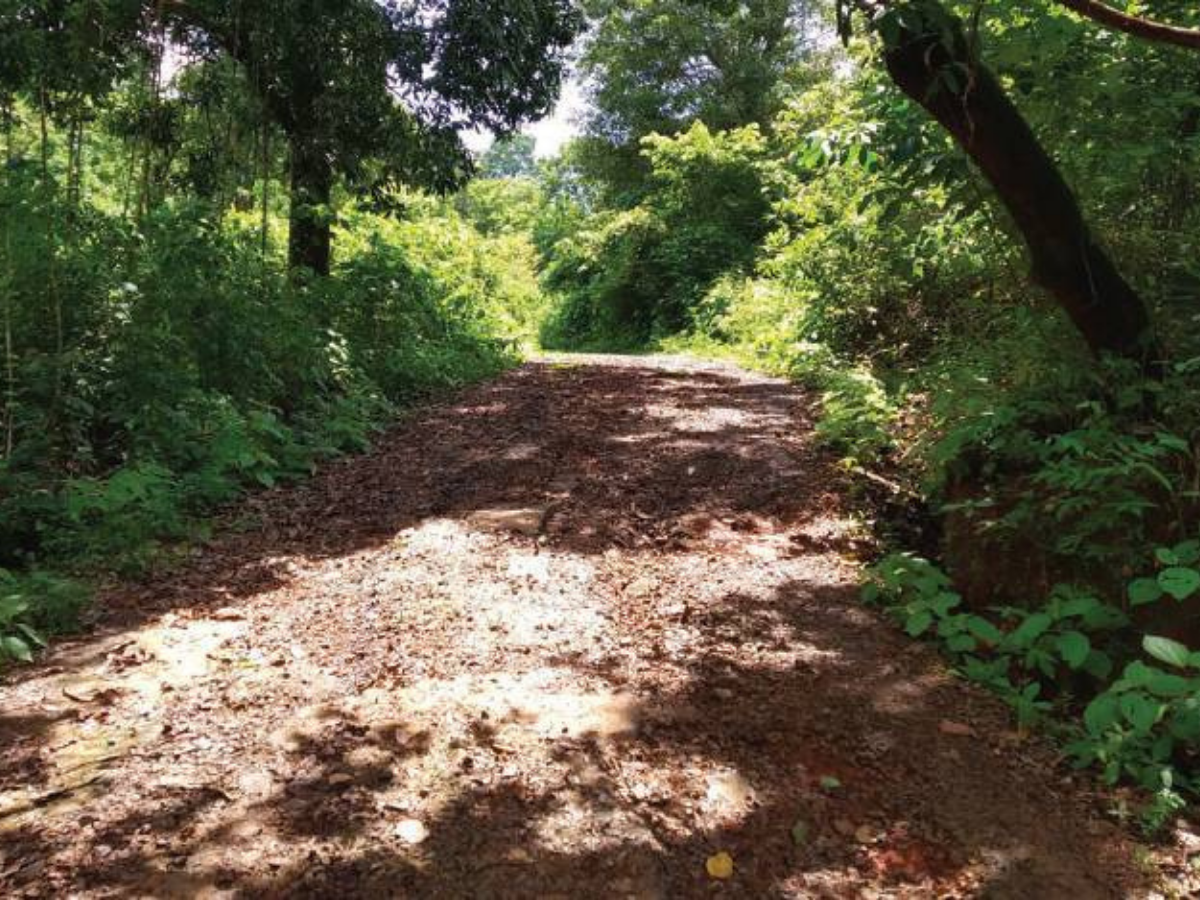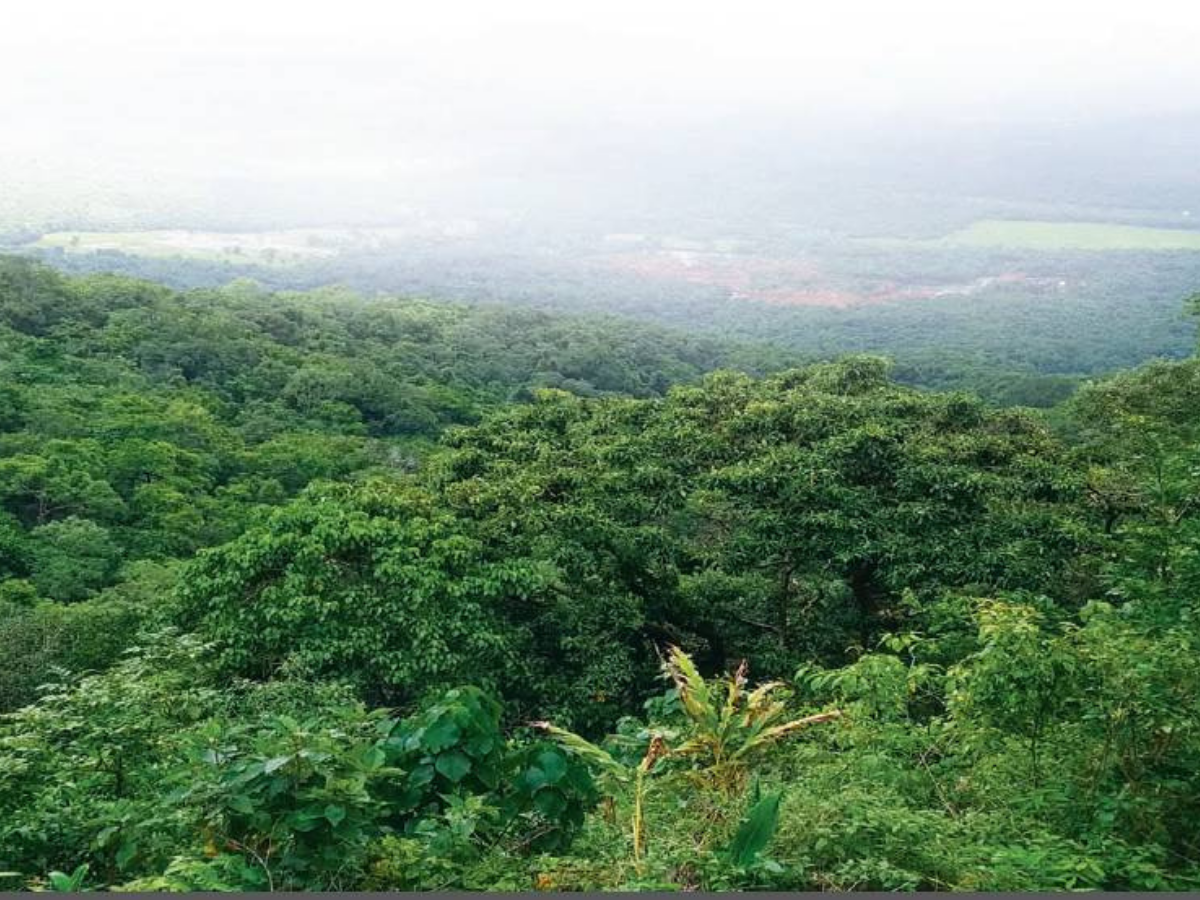“I have no way to go to the doctor. I cannot walk even two steps, and no vehicle can come to our village,” Gaonkar told TOI.

scaffolding for online studies
The story of their suffering echoes through the tribal village of Karla, inhabited by 100 people living in 20 huts in the inner spaces of the forests of the Netravali range of Sangum taluka, about 30 km from Margao.
As Goa celebrates 60 years of independence from Portuguese rule, Gaonkar and his village still depend on traditional herbs found in abundance in the forests. The nearest hospital is the primary health center at Quepem or Curchorem, about 25 km away.
To reach the nearest motorable road, Kajur is a 4 km walk from a narrow, steep and winding dirt road with huge potholes.
“There is nothing we can do during a medical emergency as no ambulance can go on this road. Imagine the plight of a woman during pregnancy,” said Gaonkar’s neighbor.

The 4 km long dirt road to Karla passes through dense forest. The risk increases during monsoon.
The nearest primary school for students is in Kajur, and the nearest high school is in Maina. About 10 high school students take an alternative route to their school – a route through dense forests that takes them over 40 minutes to go down the hill and an hour and a half to reach their village.
“It has always been like this for us,” said Bharti Gaonkar, a graduate student.
‘Roads, water and electricity supply are all we need to make our lives less difficult’
It is scary, especially when one has to walk alone through a forest path,” said Bharti, who studies at the Government College of Arts, Commerce and Science, Quepem.
“Wild animals, especially bison, have crossed my path many times. Leopards are also commonly seen. But then there is hardly any option for the school students. The forest path takes one to Pirla from where they get a bus to Maina, which is 4-5 km away,” she said.
It becomes risky during monsoons as the road is always flooded with water and the rocks become slippery.

Students have to pass through dense forests and encounter wild animals on the way to reach the nearest bus stop.
Last year before schools were closed due to the pandemic, children had to leave home before 7 am to reach on time for their classes. By the time they returned home after school, it would have been 3 in the afternoon. And on occasions where there are special classes after school, they reach home by evening, “a very risky situation as the dense forest gets dark before sunset”, the village elders told TOI.
For higher secondary and college education, as well as locals traveling for their weekly shopping, they walk along a 4 km dirt road to Kajur, from where they can take college buses or public transport to Tilmol (Tilmol). 20 km) or Karchoram (25 km).
But amidst the despair, there is a ray of hope. The younger generation has faced difficulties to attend schools and graduate from colleges knowing that education is the only way out of their misery.
“Roads, water and electricity supply are all we need to make our lives less difficult,” said Sanket Gaonkar, who has completed his masters in physical education and is currently looking for a job. are in.
“I could have completed my post-graduation by staying with a relative. I used to come home only on Sundays.”
Internet connectivity is another problem that students have to deal with. Some scaffolding has been put up by the villagers at places where a mobile network is available to enable the students to attend the classes online. Power cuts, which often occur in the last hours, make studies during the night nearly impossible.
The only source of drinking water for the village is the distant well and the water is taken out through pipelines to the community tap.
The main occupation of the villagers is cashew cultivation. Selling cashew feni to distilleries and cashew seeds to procurement agencies is the primary source of livelihood for these tribals. Some also work in cashew or paddy fields in nearby villages to meet their meager income.
Recently Tribal Welfare Minister Govind Gowde along with local MLA Prasad Gaonkar visited this village and assured them to do infrastructure work under tribal sub-plan to understand their problems.
“We have heard many such assurances in the past. We know it is election time, and they will give the same assurance again. Had he built this road, as he had assured earlier, I would not have suffered such a loss. I am now only waiting for the path of Vaikuntha (meaning death, figuratively),” said Gaonkar.
.